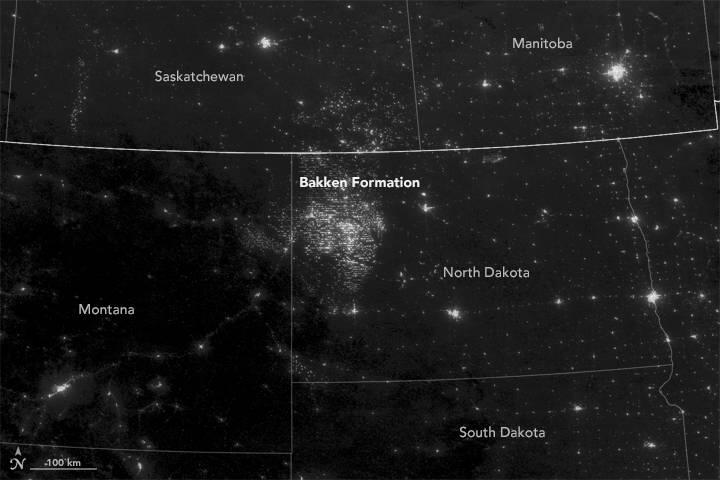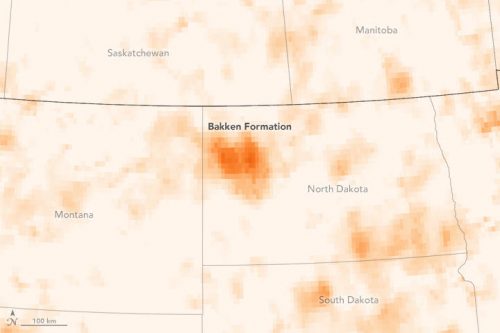Flaring of waste natural gas from industrial oil fields in the Northern Hemisphere is a potential source of significant amounts of nitrogen dioxide and black carbon to the Arctic, according to a new NASA study.
Nitrogen dioxide is a well-known air pollutant and health hazard, and black carbon, also known as soot, is an agent of global warming that is critical for understanding climate change effects in the Arctic. In addition to absorbing sunlight while aloft, which heats the air, black carbon darkens white snow when it settles on the surface, accelerating snowmelt. The amount of black carbon that reaches the Arctic is currently poorly estimated.
Nitrogen dioxide, an air pollutant produced by the combustion of fossil fuels, shows elevated levels of the gas over the the Bakken Formation of North Dakota. Credits: NASA’s Earth Observatory
“The Arctic starts from a very clean state so there’s no significant local pollution sources of dust or smoke, and in this kind of pristine environment even small anthropogenic sources make a big difference,” said Nickolay Krotkov, an atmospheric scientist at NASA’s Goddard Space Flight Center in Greenbelt, Maryland, who was part of a team looking into the origins of Arctic black carbon.
To read more about this, click here.












